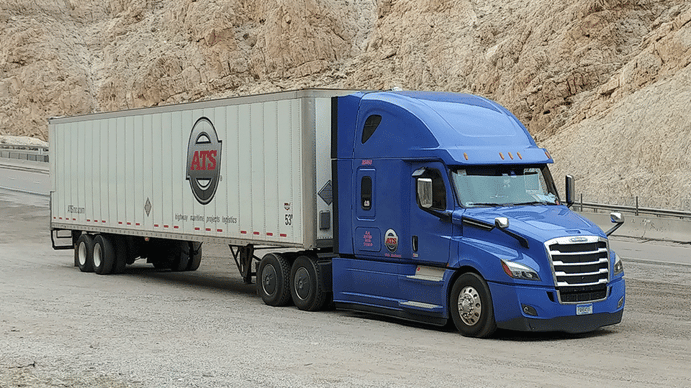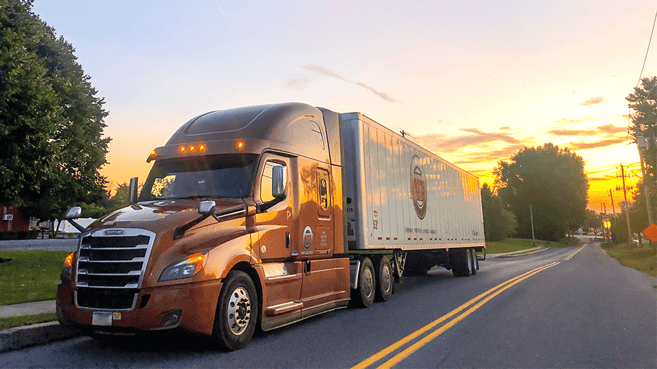
Retail and general merchandise transportation has always required precision, speed, and reliability, but perhaps never more so than in the e-commerce era. With shifting consumer expectations, rapid digital growth, and increasingly complex distribution networks, retailers and their carrier partners need a clear strategy to stay ahead.
Given the many competing priorities — speed, efficiency, cost, service quality, inventory management — critical to keeping up with the ever-increasing heartbeat of the marketplace, more than a few shippers have struggled to know where to start.
At Anderson Trucking Service (ATS), we work with many retailers across our divisions and have witnessed this change in pace alongside our customers. We understand that knowing what to prioritize in your transportation strategy can mean the difference between consistent shelf availability and costly delays.
In this article, we'll break down the three most important factors in retail and general merchandise shipping. Whether you’re a national retailer managing thousands of SKUs or a supplier distributing general merchandise to multiple store locations, you'll come away with a clearer sense of what to prioritize in the year ahead.
Key Takeaways for Retailer Shippers:
- Retail and general merchandise freight requires carriers that can manage complexity, volume, and timing.
- Prioritize reliability, visibility, and flexibility to safeguard product flow across your retail network.
- Choose a logistics provider with proven experience in seasonal surges, strict delivery windows, and multi-stop distribution.
Understanding Retail and General Merchandise Transportation
Retail and general merchandise transportation covers the movement of a broad category of consumer goods, from household items and seasonal décor to clothing, electronics, and packaged goods.
This freight mix often involves varying product sizes, handling needs, and delivery requirements, which makes planning and execution more complex than single-commodity shipping.
Retail freight is time-sensitive. Delivery windows are often narrow, dictated by store replenishment cycles, promotional schedules, or vendor compliance programs. Missing those windows can mean financial penalties, lost shelf space, and diminished consumer trust.
Retailers and suppliers must therefore build transportation strategies around three key pillars: reliability, visibility, and scalability. Each plays a critical role in keeping general merchandise flowing efficiently across the supply chain.
1. Reliability: The Foundation of Retail Shipping Success
Reliability is the most important factor in retail and general merchandise transportation. With major retailers often expecting on-time delivery (OTD) rates of 95% and above, every delay has downstream consequences.
As e-commerce continues to shorten timelines and demand more inventory, more often, every year is more competitive than the last — and 2026 is no exception. Reliability will be the key to staying ahead of your competition in the retail and merchandise space.
So, how do you make sure your shipments move with the precision and punctuality of a Swiss watch? It starts with fine-tuning your network for experience and operational savvy.
In 2026, there's no excuse for having flaky, inexperienced, or otherwise unreliable carriers in your network. Weeding out the only-okay fits in your network and filling the gaps with proven experience in retail and general merchandise freight is the first step toward a successful year of commerce.
Experienced retail freight carriers are well-versed in all the complexities of the industry: high stakes, multi-stop deliveries, rolling waves of seasonal promotions, strict compliance standards, and set-in-stone deadlines.
Look for experienced retail carriers that have designed their operations to support superior reliability for their customers, including:
- Maintaining well-serviced equipment
- Employing experienced drivers
- Developing network redundancies to cover surges or disruptions
- Understanding retailer compliance processes, including on-time, in-full (OTIF) expectations
- Communicating consistently across multiple stakeholders, e.g. shippers, carriers, distribution centers, and store managers
2. Visibility: Shipping Confidence You Can See
In 2026, robust tracking and data visibility is no longer a luxury — it's a necessity for retail shippers that want to stay competitive and efficient.
In retail general merchandise transportation, where SKU counts and destination points are high, visibility reduces uncertainty.
The ability to track your freight in real time (or close to it) allows you and your stakeholders to plan, staff, and receive freight more effectively. These data points also allow supply chain managers and logistics teams to:
- Identify trends
- Manage inventory flow
- Prevent overstocking
- React to disruptions in real time
- Assess performance
- Continually improve shipping strategies with less lag.
Modern shippers increasingly rely on technology platforms and integrated EDI systems to deliver these insights, so if you're not already, consider it time to start.
Curate your network so that the majority of your carriers provide self-service tracking tools, proactive status updates, detailed reporting, and integration with your in-house systems.
Then leverage the visibility tools offered by your carriers to:
- Access load information
- Receive milestone alerts
- Analyze reports
- Communicate directly with logistics coordinators
By combining human oversight and expertise with advanced tracking and communication technology, you can improve the flow of inventory from warehouse to store shelves with data-backed strategy tweaks.

3. Flexibility: Scaling for Constant Change
Retail freight demand rarely stays static: peak seasons, promotional cycles, and unpredictable consumer demand can strain even the best supply chains.
Flexibility — the ability to scale up or down quickly and without stumbling blocks — is a defining feature of an effective retail logistics carrier.
General merchandise often surges in Q4 due to holiday shopping, but seasonal categories like back-to-school, summer outdoor goods, or spring cleaning products create smaller peaks throughout the year.
To manage these fluctuations, look for providers with access to both dedicated assets and brokerage capacity — ensuring trucks are available when needed without long-term overcommitment.
Carriers that specialize in supporting the retail and general merchandise industry, will be especially well-positioned to offer you the combination of reliable capacity and equipment variety you need to stay nimble.
It Pays to Choose Experience
Beyond experience, our recommendation is to strategically prioritize reliability, visibility, and flexibility in your same-day shipping providers.
By regularly auditing your freight provider network for these KPIs, you can create a pool of carriers that will keep you competitive in all seasons.
If you already know your network is in need of more reliable carriers, consider reaching out to ATS, Inc. ATS's dry van division has decades of experience helping retailers and general merchandise shippers look good in front of their customers and stakeholders, and we'd love to do the same for you.





